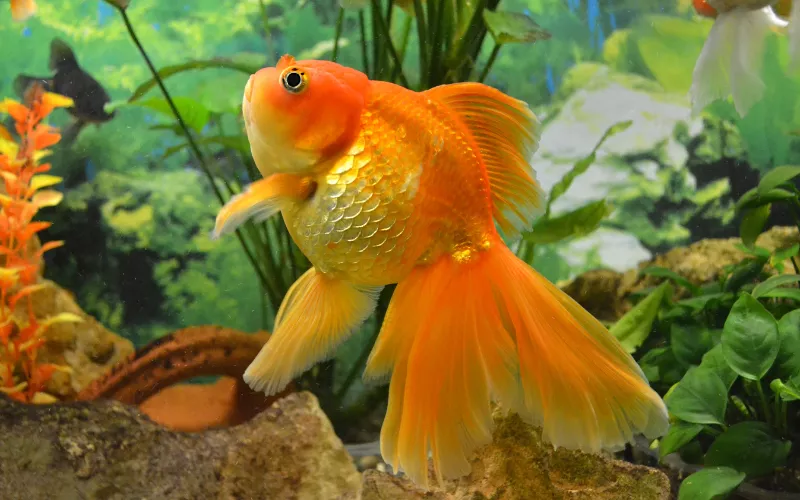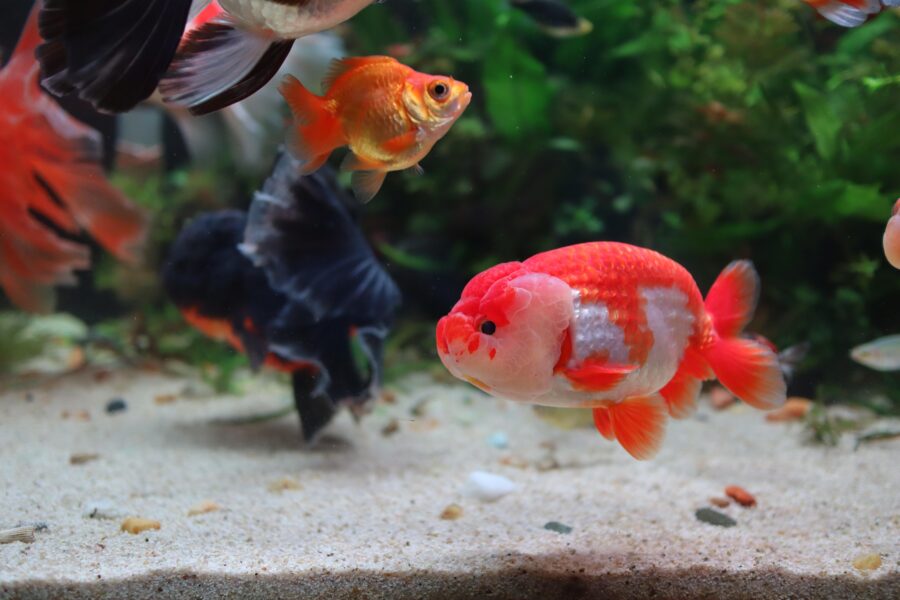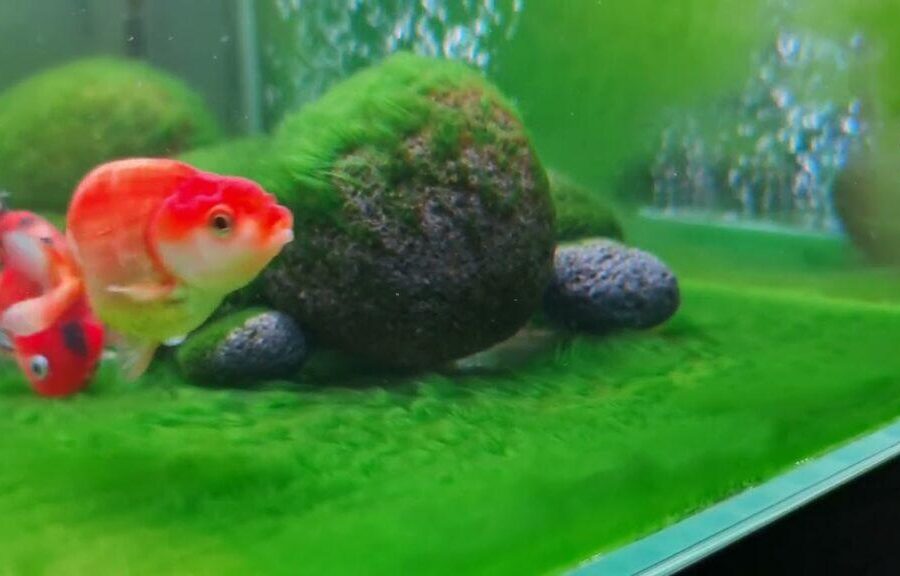
Fungus in Goldfish is a topic that may surprise many goldfish owners, as it reveals the complex biological systems at play in these seemingly simple creatures. Just as humans are susceptible to winter colds and sneezes, goldfish are vulnerable to certain medical conditions, including fungal infections. These unwelcome visitors can transform a goldfish’s bright and bubbly existence into a miserable one.
Don’t worry if this all sounds overwhelming; this guide is here to help. We’ve created an easy-to-follow resource that covers everything you need to know about protecting your goldfish from fungal threats. From recognizing the signs of an infection to implementing quarantine strategies that rival the effectiveness of your mom’s pre-meal hand-washing reminders, we’ve got you covered. Get ready to dive deep into the fascinating world of goldfish health and care!
Understanding Fungus in Goldfish
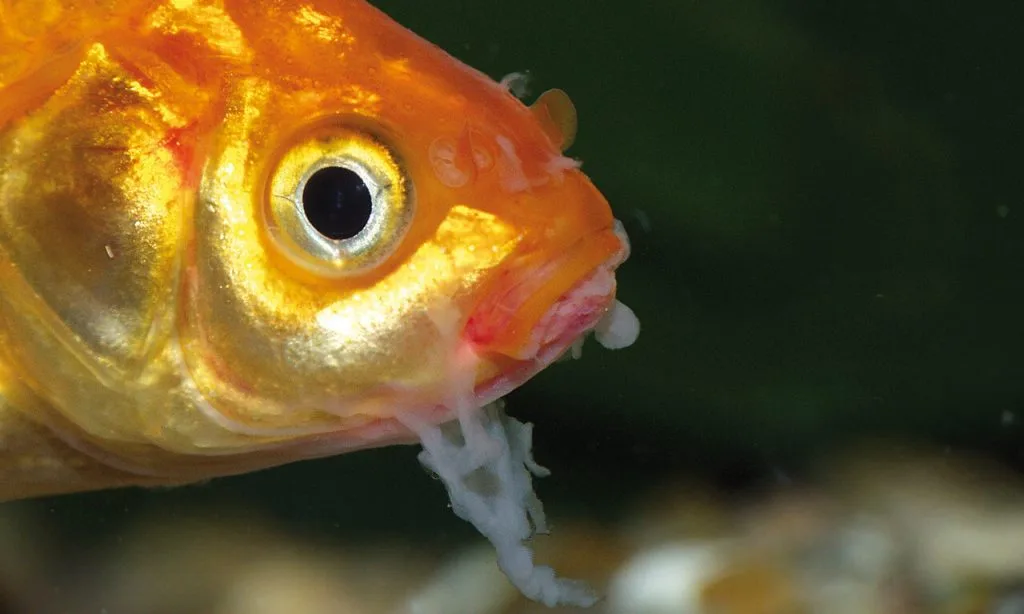
Enter the world of goldfish! These charming little beings are just as prone to getting sick as we are. Today, we delve into the murky waters of fungal infections in goldfish. Are you ready? Let’s dive in!
Types of Fungus in Goldfish
Like a bad B-grade horror film, fungal spores lurk in most fish tanks. They wait for the right moment to jump onto your unsuspecting goldfish and have a party. The most common fungi are the “Cotton Wool Disease” (a pesky Saprolegnia) and “Mouth Fungus” (the villainous Columnaris). Both are as nasty as they sound. Familiarize yourself with these names, their appearances, and behaviors. It’ll be like owning a personal fungi-fighting superpower!
Symptoms of Fungus in Goldfish
“What’s wrong with my goldfish?” you might ask. Well, watch out for fluffy white growths. These are a dead giveaway. Loss of appetite, reddish sores, or altered swimming movements are other telltale signs. Your once lively swimmer might also become lethargic. It’s like watching your favorite superhero lose their powers!
Why Goldfish Are Prone
Why do these cute little creatures get targeted by these villainous fungi? The answer lies in their scales. Or lack thereof, really. Goldfish, bless their hearts, have less protective scales than other fish. This makes them easy targets for fungi. On top of that, they’re messy eaters. This can lead to a dirty tank, creating the perfect environment for fungi to thrive.
Before you wonder if you need to construct a fungal-proof suit for your goldfish, don’t worry! Preventing infections isn’t as hard as it may seem. As we slide into our next section, we’ll go into how you can keep your aquatic pet healthy. Prepare to arm yourself with the knowledge you need to keep your goldfish’s tank a fungi-free zone. Stay tuned!
Prevention of Fungus in Goldfish
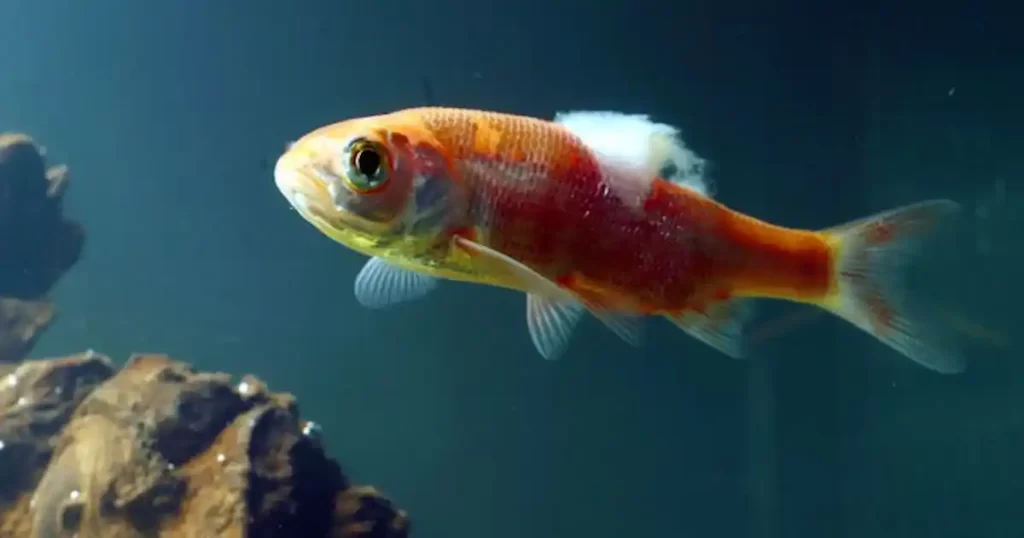
As they say, ‘Prevention is better than cure.’ This proverb stands true for maintaining goldfish health too. It’s far easier to stop infections from setting in rather than treating them when they happen.
Proper Tank Conditions
Let’s start with the crib of your goldfish, the tank. Size matters. Remember, your fish need room to swim and breathe. Keep your tank clean, and maintain a pH level of around 7 and a temperature of around 23°C. Besides, did you know, a bored goldfish can become prone to illness? Oh yes. Make your tank interesting with safe plants and toys.
Next, we dive into nutrition.
Importance of Nutrition
You know how you feel when you’ve eaten junk food for days, yeah? Your goldfish feels the same way if you don’t feed them right. Yes, chips and chocolates don’t float in water. But improper fish food can still make them lethargic. Include a balanced diet of flakes, pellets, vegetables and an occasional, non-greasy treat, perhaps?
Alright, let’s go with the flow and talk about water changes.
Frequent Water Changes
Imagine living, eating, and sleeping in the same dirty clothes for weeks. Gross, right? That’s how your goldfish feel when their water isn’t changed frequently. Ensure regular water changes to keep their home clean and your fish happy.
Ah, it feels fresh already. But we must not make a splash and forget about the next steps. So, on to the next part – taking proactive steps when an infection hits unnervingly close to home. Or tank, in this case.
Proactive Steps When Infection Strikes

Just spotted some whitish fluff on your goldie’s scales? Cue the panic. Relax! If you think your fishy friend might be into a fizzy fungal faire affray, here’s what you gotta do.
How to Quarantine Affected Fish?
First rule of Fishy Fight Club? Isolate the Ich! Separate your sick goldie from its swimmers’ squad. Imagine the tank as a kindergarten; one snotty kiddo and voila – everyone’s got the runs! Get a separate tank or a large container. Same rules apply: clean, heated, and properly filtered.
Now, let’s dive into those nitty-gritty treatment details, shall we?
Fungal Treatments: A Deep Dive
Fungi, in general, are about as welcome as a skunk at a lawn party. In the piscine world, it’s the same deal! Here’s the skinny on anti-fungal treatments:
- Anti-fungal meds, they’re to a goldfish what garlic is to vampires. Effective ones include Malachite green and Formalin. Be vigilant while administering them; more isn’t always merrier!
- We’re talking about a delicate balance here, folks! Overdose can lead to poisoned water and that’s like trading a sneeze for a seizure!
- Too complicated? Consider natural alternatives like Pimafix or Melafix. They’re safe, non-toxic and go down easier than a Sunday morning.
Monitoring Progress
The game’s not over until the fish swims. Once you’ve initiated treatment, keep an eye out for improvements. Observe your pet’s eating habits, color, and general demeanor.
Oh, and remember, don’t be that anxious parent – progress may take time! Celebrate small victories – improved appetite, less fuzzy stuff, more activeness.
Alright, so now we’ve dealt with the fungal fiasco. We’ve isolated, we’ve treated, we’ve monitored. What’s next you ask? Time to dive into post-infection care. You’re still in, right?
Post-Infection Care of Fungus in Goldfish
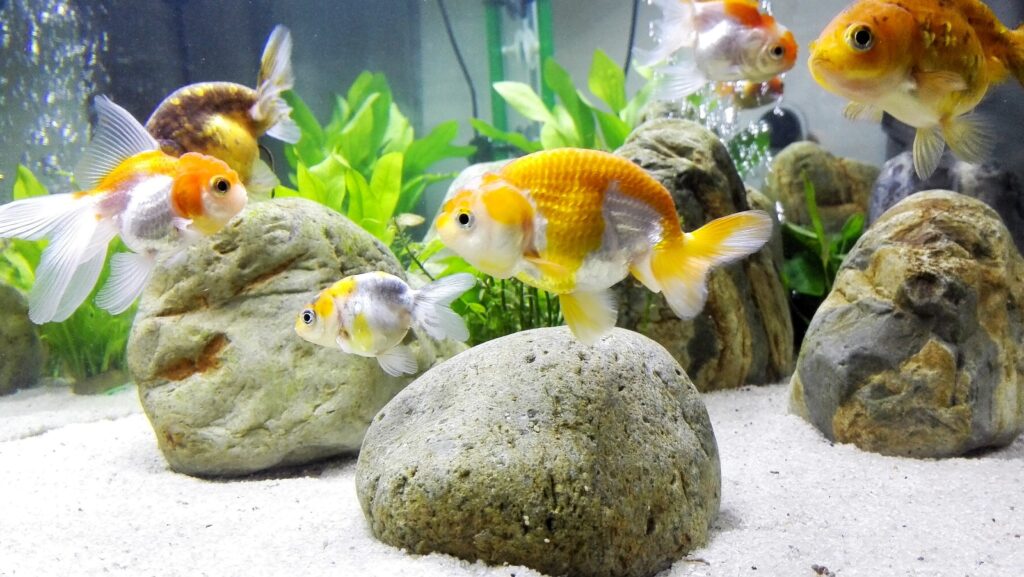
Ahoy swimmer! So, your fishy friend has encountered a fierce fungal foe and you’ve just concluded the battle of the diseases. Now what, you ask? Well, buckle up, because now we transition into perhaps one of the most important phases – the Post-Infection Care. It’s about ensuring your goldie bounces back to full health, preventing the dastardly fungus from staging a comeback, and devising a strategy to maintain your pal’s health in the long run.
Ensuring Full Recovery
The first step towards full recovery is being patient. Goldfish aren’t like comic book characters. They don’t possess Wolverine-like regenerative powers (although that’d be super cool!). Recovery can be slow, gradual and will require your utmost care. It’s crucial to continue treatments until all signs of funk are off the tank, even if your goldfish seems to be better! Remember, consistency is key!
Preventing Re-Infection
Parading around the victory flag after defeating the mushroom menace once doesn’t mean you’re out of the woods. Fungi can be persistent, like an annoying reality show judge (you know the one). Ensuring a clean, hygienic tank environment is a must. Regular water changes, removal of uneaten food and debris, can go a long way in keeping infections at bay. Each flounce in clean water is a step away from another fungal farce.
Long-Term Health Strategies
Alright, sailors, it’s time for the grand finale – charting a course for long-term health. This includes providing a balanced diet rich in nutrients. Remember, a “happy meal” for a goldfish doesn’t exactly equate to a fast-food fish fillet! Install a good filter in your tank, and don’t cram in too many shipmates. Goldie likes his space. And last, but not least, visit your aquatic vet for regular check-ups.
So, let’s take a deep breath and brace ourselves for the next sea-venture! The waters might get a bit choppy, but hey, as they say “smooth seas never made a skilled sailor.” Now you’re ready to overcome any tidal wave of troubles that your golden swimmer might face! Hope you find your horizons clear and waters warm. Until we dive in next time, keep the fins flipping and scales glistening!
Garner Expert Advice for Fungus in Goldfish
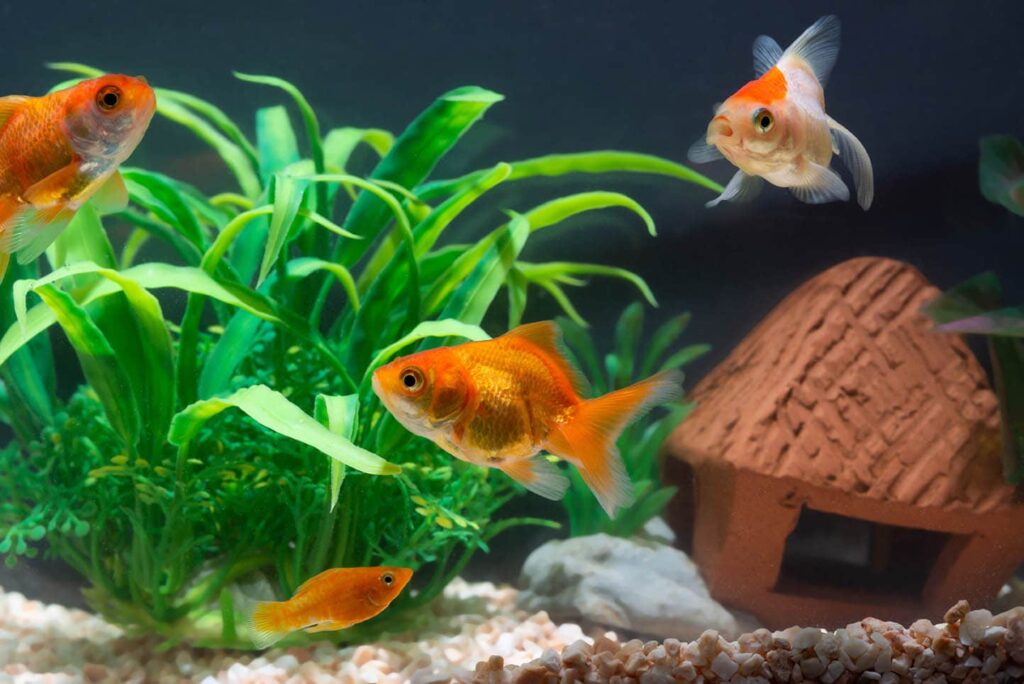
So, you’ve taken a swim through the murky waters of goldfish fungal infections, but perhaps there’s still a belly flop of worry brewing in your mind. That’s where expert advice comes in.
When to Consult a Vet
Goldfish aren’t your typical pets. Unlike Fido, they can’t whimper when they don’t feel well. But if you’ve been watching like a hawk (or a heron eyeing the koi pond), and things just don’t seem right, it’s time to call in the cavalry. A professional opinion from a vet can provide a firm diagnosis, recommend treatment options beyond your at-home arsenal, and guide you through the process. If symptoms persist, your goldfish is not improving, or in case of severe infections – don’t hesitate to consult a vet. This goes double if you’re new to the goldfish game and are feeling like a fish out of water.
Further Resources for Goldfish Care
Remember, the internet is a vast sea of knowledge, teeming with pearls of wisdom. Dive into forums, guides, and articles (like this one) to seek advice from both seasoned goldfish experts and enthusiastic armchair ichthyologists.
As we wrap up, it’s crucial to understand that achieving a full recovery from a fungal invasion is only the first step in your goldfish care journey. The challenge now is to ensure that your glimmering swimmers lead long and, most importantly, fungus-free lives. With the information you’ve gathered, you’re well-equipped to embark on this ongoing journey of care.
To Sum Up
Don’t let your goldfish make friends with fungi! Understanding fungal infections, their types, symptoms and why our goldy fellows are prone to them arms us with knowledge. Preventing your goldfish from ever needing to croak, “I feel fungi” lies in maintaining proper water conditions, providing a balanced diet, and staying committed to frequent water changes.
Yet, sometimes trouble looms in the tank despite your best efforts. Don’t flare your gills! Quarantining the affected fish, administering the proper fungal treatment, and diligent monitoring are proactive steps to take when infection strikes. Post-infection care, ensuring full recovery, warding off re-infections, and long-term health strategies play vital roles. And remember, while we might fancy ourselves the ‘scales’ of justice for goldfish, expert help is never a bad idea. Consulting a vet when needed and continually seeking further resources for goldfish care will keep your fish kicking out those water ballet routines for years to come!
Frequently Asked Questions (FAQ)
Question: What exactly is a fungal infection in goldfish, and why are they prone to it?
Answer: A fungal infection in goldfish is primarily caused by the fungus Saprolegnia. Goldfish are prone due to their sensitive scales and the moist environment they live in. Stress, poor nutrition and poor water conditions can increase their vulnerability.
Question: How can I prevent my goldfish from getting a fungal infection?
Answer: Regular water changes, maintaining appropriate tank conditions, and providing well-balanced nutrition are key to preventing fungal infections.
Question: What are the signs of a fungal infection in a goldfish?
Answer: Symptoms can include color changes, excessive mucus, fluffy white growths, abnormal swimming patterns, and decreased appetite.
Question: My goldfish has a fungal infection. What should I do?
Answer: It’s essential to quarantine the affected fish, and introduce fungal treatments. Always monitor the fish’s progress closely.
Question: After treating my goldfish’s fungal infection, what measures should I take to prevent a re-infection?
Answer: Keep implementing preventative measures; clean and regular water changes, balanced nutrition, and reduced stress factors. Monitor your fish’s health closely and take proactive steps at the first sign of trouble.
Question: When should I consult a vet for my goldfish’s fungal infection?
Answer: If the infection doesn’t improve with regular care, or the condition worsens, it’s crucial to consult a vet who specializes in aquatics.

